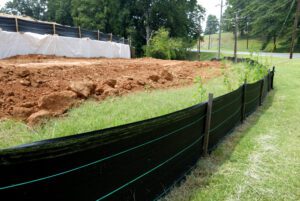Both the Centers for Disease Control (CDC) and ASTM International (ASTM) recently published new guidance for COVID-19 face masks. While these are not regulatory mandates, employers should consider incorporating these recommendations into their COVID-19 mitigation policies.
Updated CDC Mask Guidance
On February 10, 2021, the CDC issued new guidance on the use of face masks. This guidance incorporated new research, which found wearing a cloth mask over a surgical mask offers more protection against COVID-19, as does tying knots on the ear loops of surgical masks.
The revised CDC mask guidance now includes the following recommendations:
- For optimal protection, make sure the mask fits snugly against the face and choose a mask with at least two layers.
- Choose a mask with a nose wire, which prevents air from leaking out along the top.
- Use a mask fitter or brace over a disposable or cloth mask to prevent air from leaking out. These small, reusable devices cinch a cloth or medical mask to create a tighter fit and improve mask performance.
- Confirm that the mask fits snugly over the nose, mouth and chin.
- Add layers of material — either by using a cloth mask with multiple layers of fabric or by wearing a disposable mask under a cloth mask.
- Do not combine two disposable masks.
- Do not layer another mask on top of a KN95. The CDC recommends that this type of mask be used alone.
Also, significantly, the CDC has removed its guidance for homemade masks from the website. The CDC has not explicitly stated that homemade masks should not be used. However, the CDC’s removal of its previously published guidance on making homemade masks should be considered when employers evaluate their mask policy. It should also be noted that cloth masks meeting the guidelines above are still recommended.
New ASTM International Mask Standards
ASTM International announced on February 17, 2021, that it approved a new standard for barrier face coverings to help establish minimum design, performance, labeling and care requirements for reusable barrier face coverings. To meet this standard, manufacturers must test their products in accredited labs. The new standard (F3502) is intended to apply to the general public and workers.
ASTM Mask Filtration Standards
Face masks are evaluated based on two main properties: filtration efficacy and breathability. Based on these properties, manufacturers may produce masks that fall into one of the following performance categories.
- Level 1 performance verifies the minimum requirements to meet ASTM’s standard. This can be 20% filtration efficiency or an airflow resistance of 15 millimeters of water.
- Level 2 performance signifies better performance regarding the standards. For filtration efficiency, the criteria are 50% efficiency and 5 millimeters of water, which denotes lower air flow resistance.
ASTM states that products can have separate performance levels for breathability and filtration efficiency, meaning it is possible, for example, for the same product to have a Level 1 filtration efficiency but Level 2 breathing resistance.
ASTM Mask Design Standards
ASTM’s standard design criteria for face masks are similar to the guidelines from the CDC:
- Masks must stay over the mouth and nose.
- Masks cannot include vents, valves or other open pathways.
- Masks should fit snugly where the product contacts the wearer’s face to minimize gaps.
- Portions of the mask that come in contact with skin must be made of nonirritating and nontoxic materials.
- Masks should minimize the flow of air around the perimeter.
- Masks must be comfortable enough for individuals to be willing to wear for long periods of time.
- Masks are also evaluated based on their potential reuse, testing how well face masks uphold their level of efficacy after getting cleaned the maximum number of times specified by manufacturer’s care instructions.
The manufacturer must also provide recommendations for correct use of the product for the mask user:
- How to properly wear the mask.
- Whether it’s intended to be reusable.
- How to clean the mask.
ASTM also emphasizes that end users must also consider non-COVID related hazards. The ASTM standard states that “(w)here barrier face coverings are used in applications where flame, high heat, electrical arc, or other thermal hazards are present, barrier face coverings shall be qualified to the respective applicable standards, as appropriate.”
ASTM Mask Packaging Standards
The ASTM standard requires that packaging meets labeling requirements. Amongst them is the following mandatory statement on the packaging if the product meets this standard:
MEETS ASTM F3502, SPECIFICATION FOR BARRIER FACE COVERINGS. THIS PRODUCT IS PRIMARILY INTENDED AS A MEANS OF SOURCE CONTROL FOR MINIMIZING THE PROJECTION OF EXPELLED MATERIALS FROM THE WEARER’S NOSE AND MOUTH.
WARNING: THIS BARRIER FACE COVERING IS NOT A MEDICAL FACE MASK AS DEFINED IN ASTM F2100, IS NOT INTENDED FOR USE IN MEDICAL PROCEDURES, AND IS NOT A RESPIRATOR.
ASTM is an organization that publishes consensus standards, so this is not a regulatory obligation. While not currently enforceable, regulatory agencies can incorporate ASTM standards into regulations in the future, as they have done with past ASTM standards.
How Employers Should Use These Standards
Employers should review their COVID-19 mitigation program to align their mask policies with both CDC recommendations and the new ASTM standard. Incorporating these face mask policies into workplace standards will keep your COVID-19 mitigation program up to date with the latest best practices, which will help keep your employees safer.
Having a policy that adheres to CDC mask guidance and purchasing masks compliant with the ASTM standard should also be part of employers’ programs for complying with OSHA regulations. This is in light of recent revised guidance issued by OSHA, as well as the presidential directive for OSHA to decide by March 17, 2021, whether to publish an emergency temporary standard.
Employers should also ensure that face masks are compatible with other policies to control workplace hazards, such as exposure to high temperatures or electrical arc flash. Similar to other personal protective equipment, manufacturer recommendation for use, maintenance and inspection of face masks should be incorporated into workplace training programs.
Get COVID-19 Guidance Support
Tetra Tech has a team of health and safety, indoor air quality and public health professionals, as well as epidemiologists and ventilation engineers who can provide cost-effective solutions for clients implementing COVID-19 mitigation programs.
Tetra Tech experts can provide a variety of services:
- Program audits
- Compliance program development
- Contact tracing programs
- Ventilation system evaluation
- Training program development and presentation
- Surface sampling to evaluate cleaning and disinfection
Contact us today at [email protected] if you have any question on how we can support your health and safety program goals.






